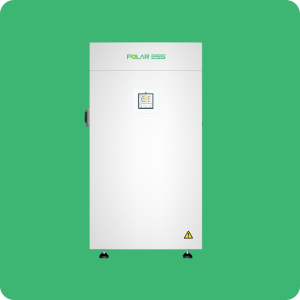When transitioning to solar energy, one of the most common questions is how to select a solar inverter that meets both performance needs and long-term reliability. At Polar ESS, we know that the inverter plays a central role in any solar energy system. It’s responsible for converting DC electricity generated by the solar panels into usable AC power for homes, commercial buildings, or grid export. Choosing the right type and specification can make a significant difference in system efficiency and energy savings.
There are several factors to consider when choosing a solar inverter. These include system size, installation environment, battery integration, and smart energy management features. Our customers often ask whether a string inverter, hybrid inverter, or microinverter is more suitable. While microinverters work well for shaded roofs or complex installations, hybrid inverters are ideal for systems that include energy storage.
Table of Contents
ToggleHow We Help You Make the Right Choice
We recommend starting with a clear understanding of your energy consumption habits and system goals. If your project includes solar battery storage, then selecting a hybrid inverter that supports both solar generation and battery charge/discharge is essential. Our hybrid inverters at Polar ESS are designed to work seamlessly with our lithium battery systems, providing flexibility and higher control over energy flows.
Another key consideration is communication compatibility. Our inverters integrate with our smart energy management systems, allowing you to track real-time power usage, solar generation, and battery status through a single platform. This makes the system easier to monitor and adjust over time. For both residential and commercial applications, we offer inverters with multiple MPPTs, high conversion efficiency, and safety protection features that meet international certifications.
Solar Inverters vs Hybrid Systems: What’s Better for Storage?
When comparing traditional solar inverters vs hybrid systems, the main difference lies in storage compatibility. Standard grid-tied inverters only manage solar generation, while hybrid inverters allow full integration with storage batteries and even energy management software. Our hybrid products combine PV input, AC grid charging, and intelligent discharge settings, giving users more autonomy over how they use and store energy.
This is particularly useful for commercial users who experience peak demand charges, or homeowners aiming to increase self-consumption rates. Hybrid systems reduce grid dependency while offering backup power during outages. At Polar ESS, we provide solutions that support both new installations and upgrades for existing.
Conclusion
At Polar ESS, we support our clients in making smart decisions for solar energy systems. If you’re wondering how to select a solar inverter, our team is here to help with tailored advice based on project size, location, and usage goals. We offer a complete lineup of hybrid inverters, energy storage batteries, and smart energy software to create fully integrated and efficient solutions. Backed by our in-house R&D teams, automated production centers, and multilingual support staff, we are committed to helping you achieve greater energy independence and value with every installation.


